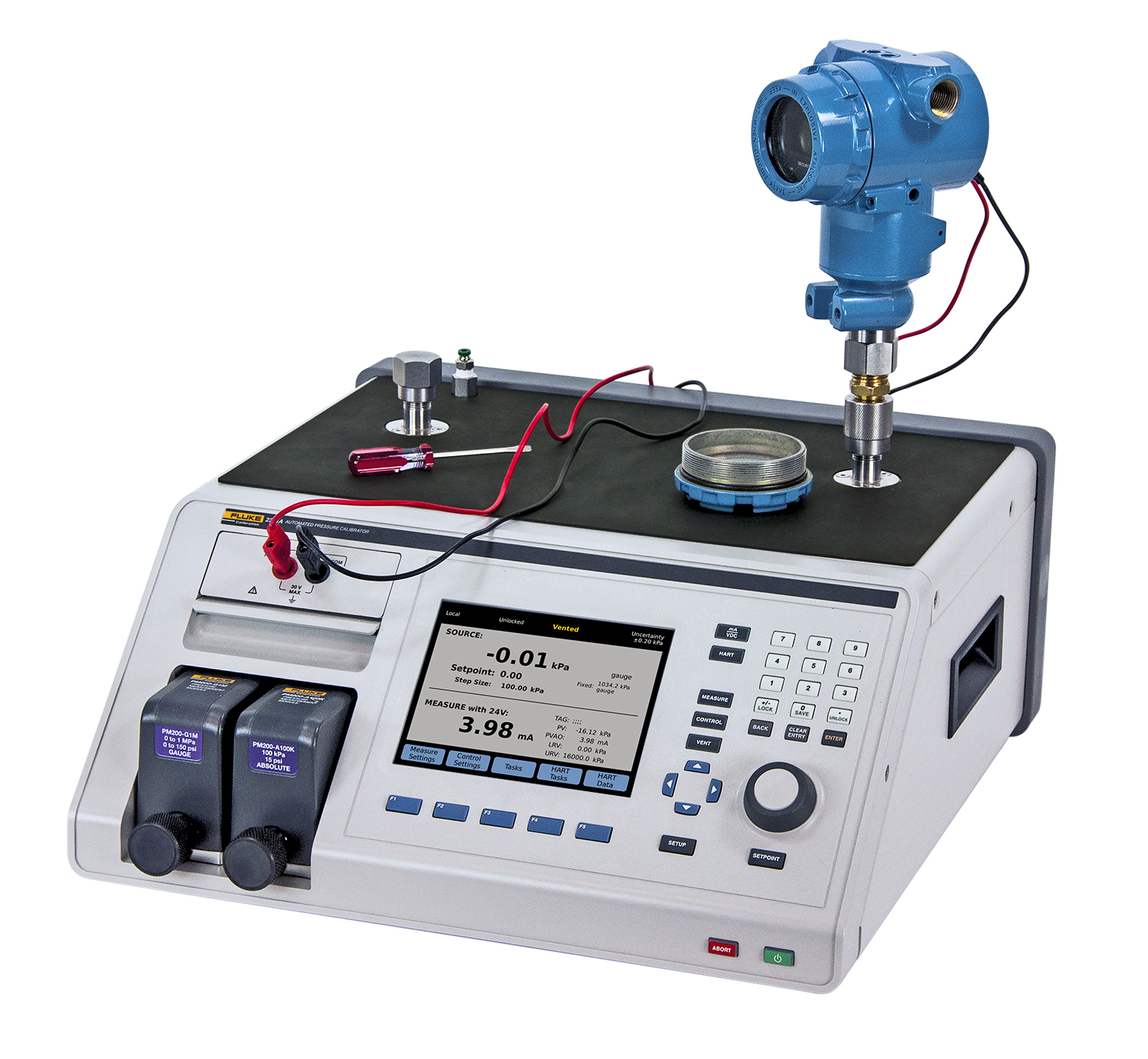- Other Fluke companies:
- Fluke
- Fluke Biomedical
- Fluke Networks
- Fluke Process Instruments
How to simplify maintenance of a HART pressure transmitter

Complete maintenance of a HART transmitter involves three distinct operations: configuration, calibration, and adjustment. Often configuration tasks can be accomplished only with a communicator, but adjustment and calibration require equipment that can accurately source pressure and measure current. Most communicators do not have the capability to measure or source analog values.
Configuring a HART transmitter consists of communicating with the transmitter and verifying its configuration data. It is beyond the scope of this application note to list the many different types of pressure transmitters and configurations, but common configuration parameters are listed below.
Calibrating a HART transmitter means to test and adjust its response so that the output accurately corresponds to the input throughout a specified range. To do this, an accurate source of pressure is required to apply a precisely known value to the transmitter. The output of the transmitter can then be compared to the known applied value, and an adjustment can be applied if needed. It is not possible to perform a calibration without comparing the transmitter’s response to a known, physical pressure.
Adjustment is the act of correcting the transmitter’s operation so that the output precisely matches the configured transfer function. In a common HART pressure transmitter there are several possible adjustment procedures:
- Reranging: sets the lower and upper range points at required pressures, similar to adjusting zero and span on an analog transmitter.
- Analog Output Trim: adjusts the transmitter’s analog output to match external standards. This essentially adjusts the transmitters digital-to-analog converter.
- Zero Trim: adjusts the input sensor to compensate for pressure offsets, typically due to installation and orientation.
- Sensor Trim: adjusts the factory sensor. This adjusts the analog-to-digital converter to compensate for sensor errors.
The adjustments that need to be performed on a HART transmitter will depend upon how the transmitter outputs are used. If only the 4-20 mA analog output signal is used, then Reranging, Analog Output Trim and Zero Trim are appropriate adjustments. If the transmitter’s digital outputs are used then Sensor Trim is necessary.
Recommended Products
2271A Industrial Pressure Calibrator
Recommended Resources
Simplifying the maintenance of HART pressure transmitters with the 2271A Industrial Pressure Calibrator - application note
Pressure calibration applications and solutions - application note
Speak with an expert
- Home
- Products
- New Products
- Electrical Calibration
- RF Calibration
- Data Acquisition and Test Equipment
- Temperature Calibration
- Humidity Calibration
- Pressure Calibration
- Flow Calibration
- Process Calibration Tools
- Calibration Software
- Service and Support
- All Calibration Instruments
- Purchase Info
- News
- Training and Events
- Literature and Education
- Service and Support
- About Us

